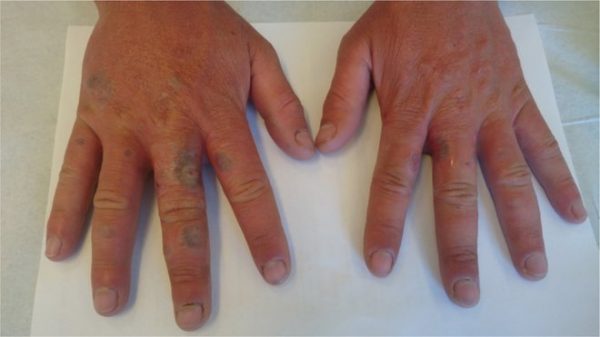A midnight sun can evoke many images, including those of an endless night and a beautiful, soft light — but a really awful sunburn probably isn’t one of them.
A man, a 29-year-old tourist from Australia, learned just that while hiking in Greenland for several weeks. He didn’t think much of it when he squeezed two limes into his water bottle during the trip, according to a report of the man’s case. But, two days later, he was surprised to find “small, purple marks on the top side of my fingers and hands,” he wrote in the report, published online Nov. 8 in the journal BMJ Case Reports.
The purple marks turned into pus-filled blisters that burned and itched. Soon, the wounds “were looking pretty bad, almost like rotten ‘zombie’ skin,” the man wrote. After rushing to the hospital, he learned that his blisters were the result of a bizarre chemical reaction between the light-sensitive compounds found in limes, and ultraviolet (UV) rays from the midnight sun.
The condition, known as phytophotodermatitis, means “plant” (phyto), “light” (photo) and “skin inflammation” (dermatitis) in Greek. It happens when a light-sensitive compound called psoralen, found in lime juice, gets on a person’s skin, and is activated by the sun’s UV light, said case report co-author Dr. Luit Penninga, a surgeon and the medical director of the Ilulissat Hospital and the Avannaa Health Region in North Greenland. And that’s precisely what happened to the man.
By Laura Geggel – Full Story at Live Science



